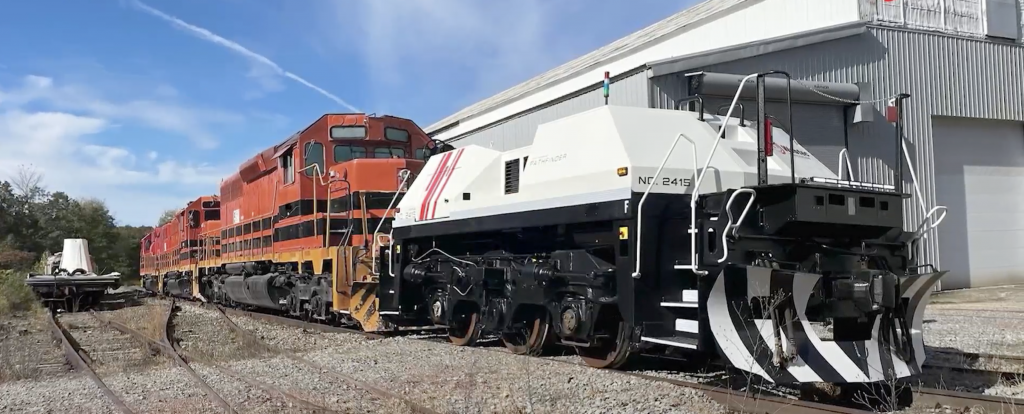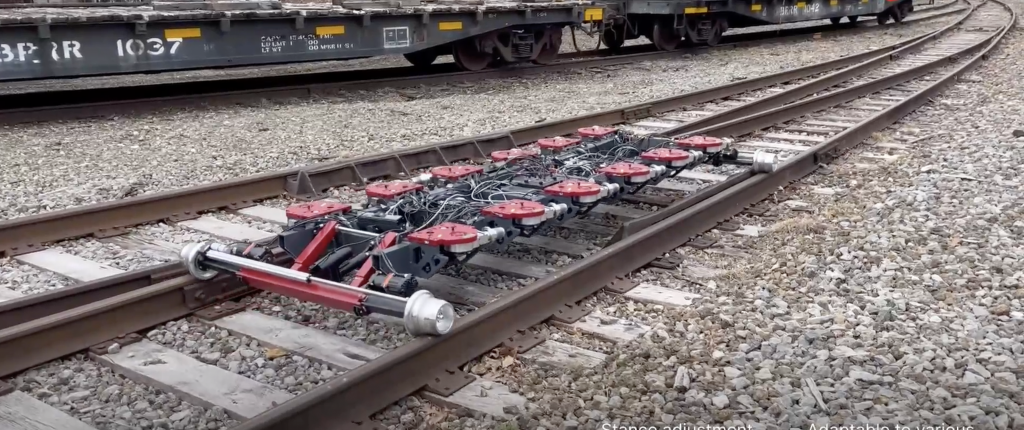By RSI Staff
At a June 2025 U.S. House Subcommittee hearing on Railroads, Pipelines, and Hazardous Materials, Wabtec Corporation’s Executive Vice President and CTO Eric Gebhardt testified on behalf of RSI. His testimony highlighted the transformative technologies reshaping America’s rail network, and how support from Congress is needed to continue RSI’s mission of advancing safety in the rail industry.
We sat down with Gebhardt to dive deeper into the themes of his testimony and explore how Wabtec and RSI are working together to build a safer, smarter and more efficient rail system.

Your testimony highlighted the role of technology in improving rail safety, efficiency, and sustainability. Can you provide a specific example of a recent technological innovation from Wabtec that has demonstrably saved lives or prevented accidents?
One of the most impactful technologies we’ve deployed is Positive Train Control (PTC). It’s been in operation for about five years in the U.S. and is now active on 24,000 locomotives, covering over a million miles daily. PTC acts as a safety overlay across the Class 1 track network, enforcing speed limits and train authorities to prevent accidents.
We’re now advancing to PTC 2.0, which shifts from track-circuit-based systems to GPS-based tracking. This upgrade will enable virtual block systems, increasing network fluidity and capacity while maintaining SIL4-level safety standards on an international scale.
You mentioned the importance of partnership with Congress and the administration. In your opinion, what is the single most critical policy or legislative action that Congress could take right now to foster greater technological advancement in the rail industry?
Continued federal funding for research and development (R&D) and technology deployment is essential. Besides funding, we need streamlined regulatory approval processes. Faster waiver processes and closer collaboration between the FRA, Class 1s, and suppliers would accelerate deployment and maximize safety and efficiency gains.
What role does the rail supply industry play in ensuring the long-term sustainability and growth of the American rail system, beyond just providing new technology?
The rail supply industry is the cornerstone of U.S. transportation. It supports economic development, drives innovation and ensures the backbone of freight movement remains strong. Beyond technology, we contribute to infrastructure upgrades, emissions reductions, and regulatory modernization. Whether it’s deploying Tier 4 emissions tech or digitizing safety systems, our collective efforts shape the future of rail.
RSI plays a critical role in advocating for the effectiveness of our industry, educating lawmakers and coordinating railway industry voices.
Given the upcoming September 30, 2026, expiration of the Infrastructure Investment and Jobs Act (IIJA), what are your primary concerns and hopes for the next surface transportation reauthorization bill?
e hope to see sustained or increased federal investment, especially with dedicated set-asides for digital safety and inspection technologies. Technologies like Pathfinder allow short lines to upgrade entire trains without replacing the electronics on every locomotive — bringing PTC and Trip Optimizer capabilities to more operators.

We also need expanded support for advanced inspection technologies like RailGhost, which has the potential to use acoustic, thermal, and visual monitoring for automated inspections. These innovations reduce risk for yard personnel and improve maintenance accuracy.

Your testimony focused on three key areas for rail safety: accident prevention, asset health awareness, and network utilization. How do these three domains work together to create a holistic safety strategy, and which one presents the most significant challenge to implementing new technology?
These domains are deeply interconnected. Accident prevention is driven by systems like PTC. Network utilization improves with technologies like virtual blocks and Trip Optimizer.
Asset health awareness is where we see the most transformative potential and is the biggest challenge.
Wabtec remotely monitors 18,000 locomotives, processing 10 million data messages daily and issuing 400 maintenance recommendations. This enables condition-based maintenance, extending service intervals and improving reliability. The challenge lies in integrating and acting on this data across diverse fleets and operators. When done right, this creates a digital ecosystem that enhances safety, efficiency and, ultimately, profitability.
What is your long-term vision for how emerging technologies will fundamentally reshape the American freight rail networks over the next decade?
Our vision is a network that’s safer, more reliable and at a higher velocity. Technologies that include acoustic monitoring, thermal imaging, and AI-driven diagnostics will make inspections smarter and faster.
We’re not just improving rail — we’re redefining it. With RSI’s leadership and industry collaboration, we’re building a future where rail remains the most efficient and sustainable way to move goods across America. Technology, policy, and partnership must move in lockstep to ensure America’s rail system remains the safest and most efficient in the world.
About the Railway Supply Institute (RSI)
The Railway Supply Institute (RSI) is dedicated to advancing safety, innovation, technology, and sustainability within the freight and passenger railway supplier industry, both in North America and global markets. As the voice of the industry, RSI strategically engages in critical and urgent industry matters by leveraging the technical expertise of our members to advocate in the legislative and regulatory arenas, foster education, host impactful events, and facilitate networking opportunities. For more information visit www.rsiweb.org, follow RSI on Twitter and LinkedIn.
